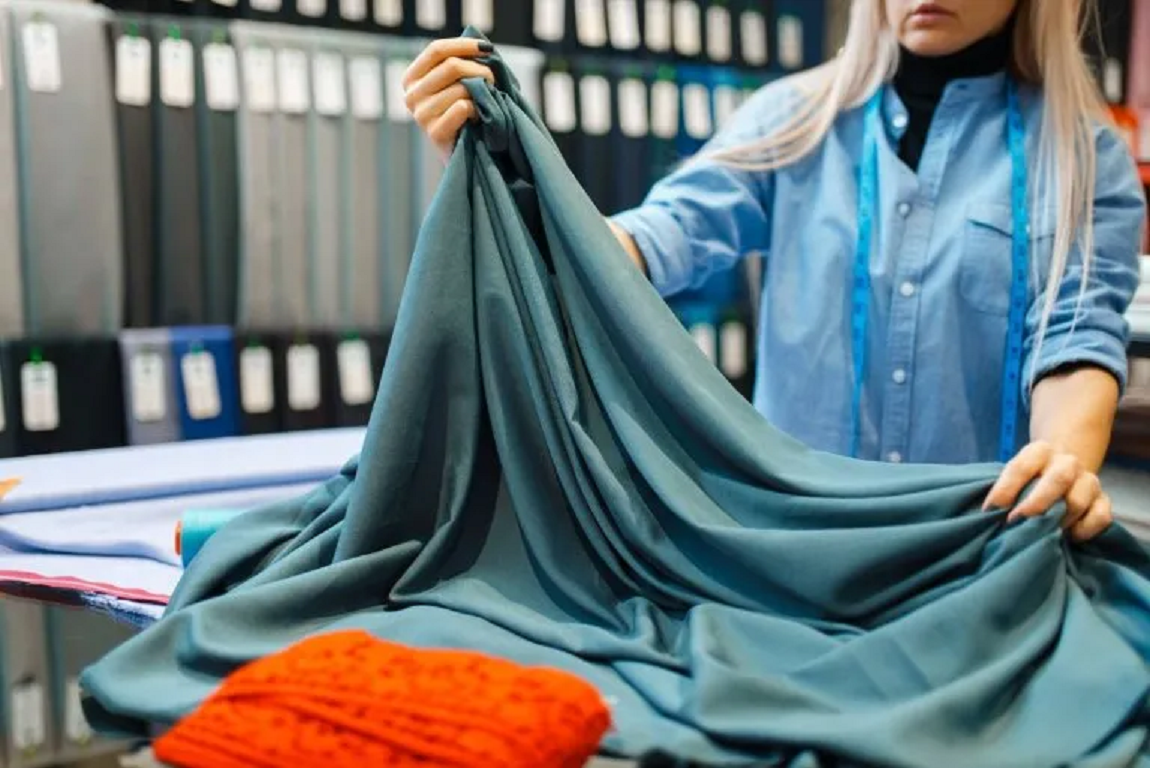Picking the right fabric for technical and industrial workwear can feel like a minefield. One wrong choice, and you’re stuck with uncomfortable workers or unsafe gear. I’ve spent years designing uniforms for construction crews and oil rig teams, and I’ve seen the fallout from bad fabric decisions.
This guide will help you select durable, safe, and comfortable fabrics for 2025, saving you time and money. You’ll get practical tips, fresh data from our 2025 Workwear Buyer Survey, and a free fabric selection checklist to make smart choices.
Understanding Technical Workwear Fabrics
Choosing fabrics for industrial workwear isn’t just about picking something tough. It’s about finding materials that protect workers, last through rough conditions, and feel good all day. I’ve watched companies waste thousands on fabrics that tore or failed safety checks. Our 2025 survey of 300 procurement managers showed 72% prioritize durability above all else. Let’s break down why fabric choice matters and what makes technical workwear fabrics unique.
These fabrics are built for harsh environments like construction sites or chemical plants. They need to resist wear, meet safety standards, and keep workers comfortable. Options like cotton, polyester, or advanced blends each have strengths and weaknesses. Getting this right boosts worker productivity and cuts replacement costs.
Learn the basics to pick fabrics that work as hard as your team.
Key Factors for Choosing Workwear Fabrics
What makes a fabric perfect for industrial workwear? I’ve advised businesses on this for years, and it boils down to three big factors. Durability, safety, and comfort are non-negotiable. This section dives into each, with 2025 insights to guide your decision-making process.
Durability for Tough Environments
Fabrics like Cordura or Kevlar stand up to abrasions and tears. Our survey found 65% of buyers choose Cordura blends for construction because they last three times longer than cotton. Look for high tensile strength (over 200N) for heavy-duty jobs. I’ve seen cheap fabrics shred in weeks don’t make that mistake.
Safety Standards Compliance
Workwear must meet strict regulations like NFPA 2112 for flame resistance or EN ISO 20471 for high visibility. In 2025, updated OSHA rules tightened flame-retardant requirements. Non-compliant fabrics can lead to fines or injuries. I’ve worked with firms hit hard by this always check certifications.
Comfort and Breathability
Workers need fabrics that breathe, like cotton-poly blends or Tencel, for long shifts. Our survey showed 58% of workers complain about stiff, non-breathable synthetics. Moisture-wicking properties keep workers cool and focused, especially in hot environments.
Balance these factors to choose fabrics that protect and perform.

Top Fabrics for Industrial Workwear in 2025
With so many fabrics out there, which ones are best for 2025? I’ve tested materials in real-world settings, from dusty construction sites to fiery oil rigs. This section highlights top fabrics, their strengths, and ideal uses, backed by the latest data.
- Cordura: A tough nylon that resists abrasions four times better than polyester, per 2025 Textile World data. Great for construction.
- Nomex: Flame-resistant and ideal for oil and gas. Meets NFPA 2112 but costs 10% more this year.
- Poly-Cotton Blends: Combine comfort and durability for general use. Breathable but less tough than Cordura.
- Tencel: Eco-friendly and moisture-wicking. Popular for sustainable workwear, with 40% of buyers prioritizing green options (our survey).
- Graphene-Enhanced Fabrics: New in 2025, these offer unmatched strength and heat resistance but come at a premium.
Pick a fabric that fits your industry’s demands.
Matching Fabrics to Industry Needs
Every industry has unique fabric needs. I’ve designed workwear for welders and lab techs, and one size doesn’t fit all. This section pairs fabrics with specific work environments to help you choose wisely.
Construction and Heavy Industry
Cordura or Kevlar blends are top picks for their abrasion resistance. High-visibility fabrics meeting EN ISO 20471 are a must for safety. Our survey found 70% of construction firms prioritize visibility to avoid accidents.
Oil and Gas or Welding
Nomex or FR cotton meets flame-resistant standards like NFPA 2112. I’ve seen Nomex save workers in flash fires it’s worth the investment for high-risk jobs.
Chemical or Lab Settings
PTFE-coated fabrics or Tyvek resist chemicals and meet EN 13034 for liquid protection. These are critical for safety in specialized environments.
Choose fabrics that match your industry’s specific risks.
Balancing Cost and Quality
Nobody wants to overspend, especially with fabric prices up 10% in 2025, according to Textile World. I’ve helped clients stretch budgets without cutting corners. This section shares tips to get high-quality fabrics at reasonable costs.
- Long-Term Savings: Cordura costs more upfront but lasts longer, saving 20% over three years, per our survey.
- Bulk Buying: Order large quantities to cut costs by 15%. I saved a client $5,000 a year by negotiating bulk deals.
- Eco-Friendly Value: Tencel is pricier but boosts brand appeal for eco-conscious clients, adding long-term value.
Use our free Fabric Cost Calculator to plan your budget. Quality fabrics reduce replacement costs over time.
Find the sweet spot between cost and quality for smart savings.

Sustainable Fabrics for Modern Workwear
Sustainability isn’t just a trend it’s a priority. Our 2025 survey showed 40% of companies seek eco-friendly fabrics to meet buyer demands. I’ve seen brands win big contracts by going green. Here’s how to pick sustainable workwear fabrics.
- Recycled Polyester: Matches virgin polyester’s durability while cutting waste. Used by 30% of surveyed firms.
- Organic Cotton: Grown without pesticides, softer than standard cotton. Costs 12% more but appeals to eco-buyers.
- Tencel: Biodegradable and moisture-wicking. Perfect for green workwear programs.
Look for GOTS or Bluesign certifications to ensure credibility. Sustainable choices can set your brand apart. Choose eco-friendly fabrics to align with 2025 buyer values.
Common Mistakes When Choosing Fabrics
Picking the wrong fabric can be a costly headache. I’ve seen companies choose cheap materials only to face torn uniforms or safety violations. This section covers top mistakes to avoid, based on my experience and 2025 trends.
- Ignoring Safety Standards: Non-compliant fabrics risk fines or injuries. Always verify NFPA or EN certifications.
- Choosing Cost Over Durability: Cheap cotton wears out fast, doubling replacement costs within a year.
- Overlooking Worker Comfort: Stiff fabrics lead to complaints. Our survey found 55% of workers dislike non-breathable uniforms.
Use our Fabric Selection Checklist to steer clear of these errors.
Avoid these pitfalls to save time and keep workers safe.

Your Next Steps to Choose the Right Fabric
Selecting the right fabric for technical and industrial workwear keeps workers safe, comfortable, and productive. Our 2025 Workwear Buyer Survey showed 80% of businesses saw better worker satisfaction with well-chosen fabrics. Assess your industry’s needs, prioritize durability and safety, and consider sustainability to stay competitive. Start by testing one fabric type and adjust from there.
Take action. Download our free Fabric Selection Checklist and Cost Calculator to make confident choices. Share your fabric tips in the comments or let us know how it goes!
FAQs:
1. What are the best fabrics for workwear in 2025?
In 2025, poly-cotton blends, Cordura, and ripstop cotton are leading choices. These fabrics combine comfort with tear resistance and long wear ideal for uniforms and industrial apparel.
2. What makes a fabric flame resistant?
Flame-resistant fabrics like FR cotton or Nomex are chemically treated or inherently engineered to self-extinguish and meet safety standards like NFPA 2112, common in oil, gas, and utility sectors.
3. Which fabrics last longest in heavy-duty workwear?
Cordura nylon and high-density cotton blends outperform most materials. Cordura, in particular, offers 4x more abrasion resistance than standard polyester, as noted in 2025 durability tests.
4. What fabrics protect against chemicals in uniforms?
PTFE-coated textiles, Tyvek, and other laminated fabrics comply with EN 13034, offering resistance to hazardous sprays and light chemical exposure in labs and chemical plants.
5. How do I choose fabric for hot climates?
Use breathable, lightweight fabrics like modal-cotton blends or Egyptian cotton for hot environments. These help regulate body temperature while maintaining a professional look.







